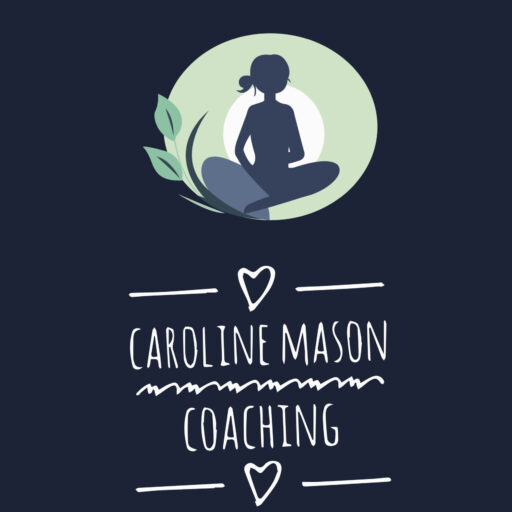I've witnessed countless remote teams struggling with disconnection, fear of speaking up, and diminishing trust. After years of coaching leaders through these challenges, I've developed a simple yet transformative approach: a 10-minute daily framework that builds psychological safety brick by brick.
Working remotely strips away the natural connection points that happen in physical offices: the coffee machine chats, the spontaneous collaboration, the ability to read body language. Without intentional effort, teams can quickly become isolated islands rather than connected communities.
Understanding Psychological Safety in Remote Work
Psychological safety, as defined by Harvard's Amy Edmondson, is the ability to bring up genuine opinions, ask questions, or own up to mistakes without risking punishment or social exclusion. In remote environments, this becomes exponentially more challenging because we lose those subtle human cues that signal safety and belonging.
I've found that remote psychological safety isn't about grand gestures: it's about consistent, daily micro-interactions that accumulate into trust. That's where my 10-minute framework comes in.

The Four Pillars of Remote Psychological Safety
Before diving into the framework, let's understand what we're building towards. Professor Timothy R. Clark identifies four progressive stages:
Inclusion Safety: Team members feel they belong and are valued
Learner Safety: People feel safe asking questions and making mistakes
Contributor Safety: Everyone feels confident sharing their skills and opinions
Challenger Safety: Team members can question decisions without fear
Each stage builds upon the previous one, and my framework addresses all four systematically.
The 10-Minute Daily Framework
Minutes 1-3: The Human Check-In
Start every team interaction with genuine human connection. Instead of jumping straight into work, I encourage leaders to ask: "How does it feel to be you right now?" This simple question opens doors to authentic sharing.
During these three minutes, practice active listening. Put away phones, close other tabs, and give your full presence. When someone shares a challenge, resist the urge to immediately problem-solve. Sometimes people just need to be heard.
This creates inclusion safety: the foundation of everything else we're building.
Minutes 4-6: The Learning Moment
Dedicate two minutes to normalising learning and mistakes. Share something you're currently learning or a recent mistake you made. This models vulnerability from the top down.
Ask questions like: "What's something you're curious about?" or "What would you try if you knew you couldn't fail?" These questions signal that exploration and uncertainty are not just acceptable: they're encouraged.
I've seen this simple practice transform teams from risk-averse to innovation-ready within weeks.

Minutes 7-9: The Contribution Invitation
Use these minutes to actively invite diverse perspectives. Instead of asking "Any questions?" which often meets silence, try specific invitations: "Sarah, I'd love to hear your thoughts on this" or "What would you add from your experience with similar projects?"
Rotate who you invite to contribute, ensuring quieter team members have equal opportunities to share. Remember, some people process internally and need explicit permission to speak.
This builds contributor safety: helping people feel their unique perspectives are genuinely valued.
Minutes 10: The Challenge Welcome
End with an invitation to challenge or question. Say something like: "What have I missed?" or "Where might this approach fall short?" This demonstrates that dissent isn't just tolerated: it's essential for good decisions.
When someone does raise a concern, thank them specifically: "I'm so glad you brought that up" before addressing the content. This reinforces that challenging ideas is a valuable contribution, not a personal attack.
Implementing the Framework Across Remote Touchpoints
Daily Standups
Transform routine status updates into safety-building moments. Instead of just "What did you do yesterday?" add "What support do you need today?" This shifts from reporting to collaboration.
One-to-One Sessions
Use the framework structure for individual meetings too. The human check-in becomes even more important in private conversations where people might share challenges they wouldn't raise publicly.
Team Retrospectives
Apply all four elements when reviewing projects. Celebrate learning moments alongside successes, and actively seek out dissenting opinions about what could improve.

Common Obstacles and Solutions
"We Don't Have Time"
I hear this frequently, but consider the cost of poor psychological safety: decreased innovation, higher turnover, and team conflicts that consume hours of management time. Ten minutes of daily investment prevents much larger problems.
"It Feels Forced"
Like any new skill, it feels awkward initially. I encourage leaders to be transparent: "I'm trying something new to help us connect better as a remote team." Vulnerability about the process itself builds safety.
"Some Team Members Don't Participate"
Not everyone will engage immediately. Continue providing opportunities without pressure. Sometimes it takes weeks or months for quieter team members to feel safe enough to contribute openly.
Measuring Your Progress
Look for these indicators that psychological safety is growing:
- Team members ask more questions during meetings
- People admit mistakes more readily
- Diverse opinions emerge without prompting
- Conflicts are addressed directly rather than avoided
- Team members reach out for help before crises occur
The Ripple Effect
When psychological safety flourishes, everything else improves. Teams become more innovative, resilient, and cohesive. Remote work transforms from a necessary compromise into a competitive advantage.
I've seen teams using this framework develop stronger bonds than they ever had in physical offices. The intentionality required for remote connection often creates deeper relationships than casual office interactions.

Personalising Your Approach
Every team is unique, and what works for one group might need adjustment for another. Some teams thrive on more structured approaches, whilst others prefer organic conversations. The key is consistency and genuine care for your team members as whole people.
Consider your team's cultural background, communication preferences, and current trust levels when implementing this framework. Start slowly and build momentum rather than overwhelming people with sudden changes.
Beyond the Daily Framework
Whilst daily practices form the foundation, psychological safety also requires systematic support. Embed these principles into hiring processes, performance reviews, and team policies. Make safety a measurable outcome, not just a nice-to-have cultural element.
Regular team retreats can accelerate this work, providing dedicated time and space for deeper connection and trust-building that's harder to achieve in daily operations.
Your Next Steps
Building psychological safety in remote teams isn't a destination: it's an ongoing practice that requires commitment and skill development. The 10-minute daily framework provides structure, but the heart of the work lies in genuine care for your team's wellbeing and growth.
If you're ready to transform your remote team dynamics, I'd love to support your journey. At Caroline Mason Coaching, I offer specialised retreats focused on building psychologically safe remote cultures, along with one-to-one coaching for team leaders navigating these challenges. For women leaders specifically, I provide tailored coaching that addresses the unique dynamics of leading with both authority and compassion.
Together, we can unlock your team's full potential and create the kind of remote work environment where everyone thrives. Let's work together to build something extraordinary.


